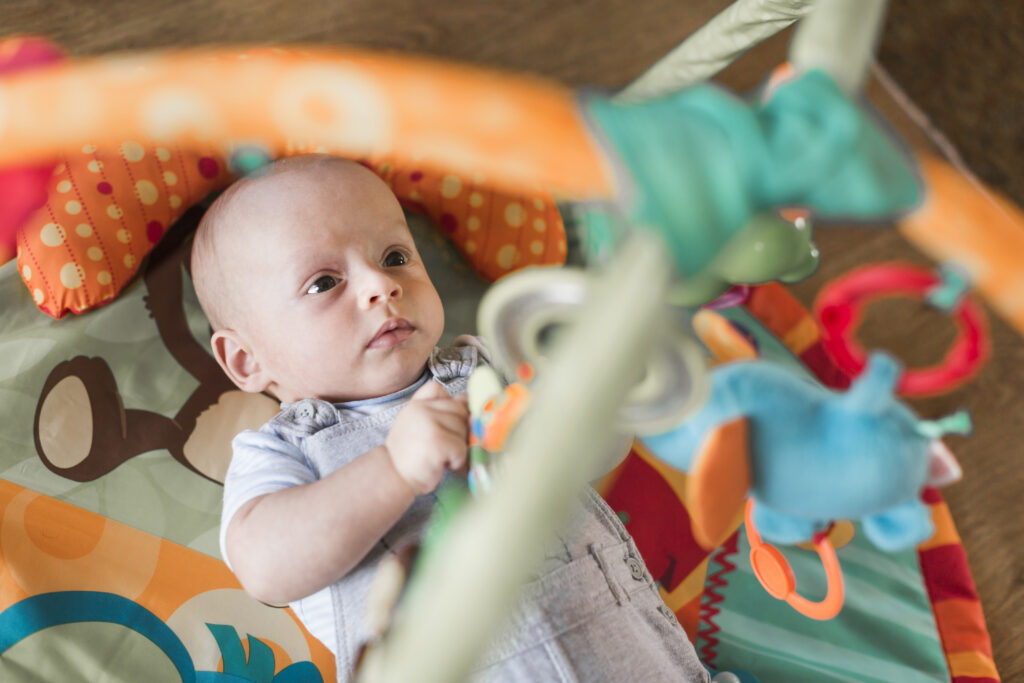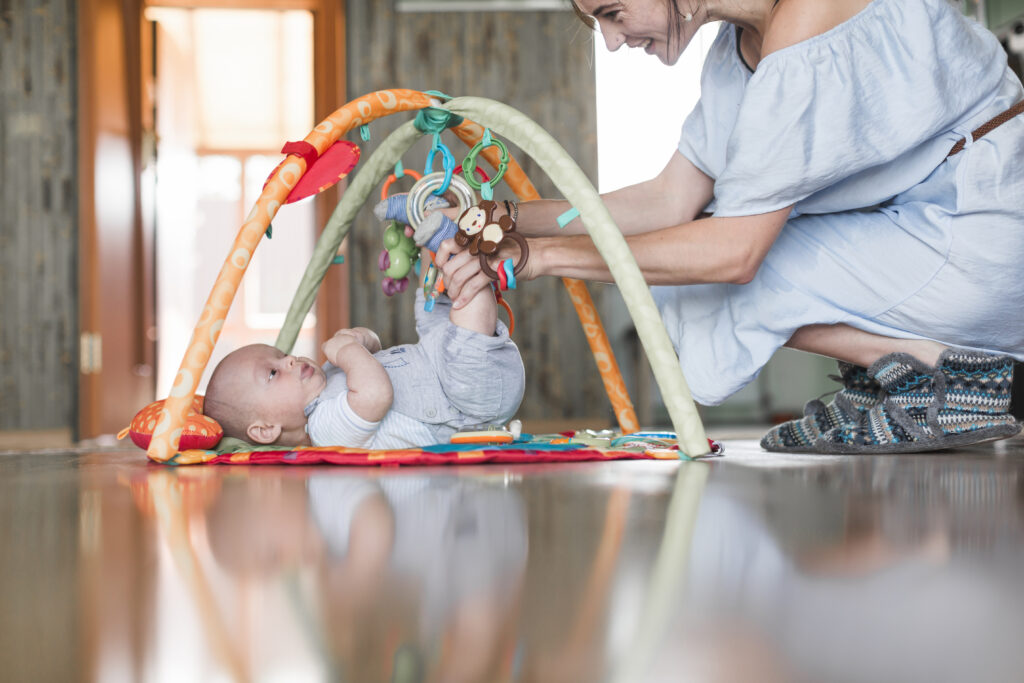We all know, baby mood swings can be a normal part of early development. Being a parents, we quickly judge and realize that babies can be unpredictable based on their mood.
At one time, they are laughing and enjoying our company but, the next moment they suddenly angry or reject surrounding environment.
This emotional rollercoaster is called as baby mood swings. Don’t be worried as it is a normal part of early childhood development.
Successful strategy is to understand why these mood swings happen on and off, how to prevent them from occurrence and how to manage them, is key to easing frustration for both the baby and the parent.
In this post, we will discuss all the causes of baby mood swings, to highlight solutions. So, stay connected with us to know what to do, being a new and old parent.
What is Baby Mood Swings?
Baby mood swings can be referred to the rapid and often unpredictable changes in a baby’s emotional state.
Babies experience many emotions but are not be able to regulate or express these emotions truly.
Sudden shift in attitude of a baby can be judged from being calm and content to agitated, furious and fussy within milli seconds.
Emotional changes are due to developmental modifications, their environment, and unmet needs like hunger or discomfort.

Baby Mood Swings in 0-3 Month Old Babies
When a baby comes out of a womb, the process called parturition, it experiences a sudden change in environment.
This is why, newborns tend to display mood swings based on their immediate physical needs, such as hunger, tiredness, or discomfort, they feel immediately after the birth
So, during the first three months of life, babies are trying to adjusting to the world outside the womb.
During 0-3 months of age, baby’s nervous system is still immature as compared to older babies, and even small changes can stimulate emotional responses in babies which lead to crying and fussiness.
However, with the passage of time, as they grow, they become efficient enough in expressing their needs in different ways, like through facial expressions and sounds.
Baby Mood Swings in 3-8 Month Old Babies
As babies reach the 3-8 month mark, their emotional world expands.
Because, at this age, they becoming sensible and more aware of their surroundings, improving their understanding, interacting more with parents and showing choices for toys and activities.
They particularly show mood swings when they are overstimulated or frustrated. For example, when a baby is learning new motor skills such as rolling over or sitting up.
Separation anxiety may appear during this age, which contribute to a baby’s emotional fluctuations.
Baby Mood Swings in 8-12 Month Old Babies
When a baby reach 8-12 month mark, they become more emotionally expressive.
During this stage, it is seen that separation anxiety reaches its peak.
Babies become immediately sad when caregivers exit the room or inclined toward certain people.
This ability to identify familiar and unfamiliar faces causes mood swings, especially when they feel threatened, danger or overwhelmed.
When babies try to adopt and master new skills like crawling and standing, they might show frustration but sometimes lack the coordination or strength to succeed.
Signs of Mood Swings in Babies
Identifying mood swings in babies assists the parents respond efficiently.
You can identify mood swings in babies through common signs, which include, sudden crying after moments of contentment, clinginess, irritability, and difficulty being soothed.
Babies emotional changes lead to modifications in their eating or sleeping patterns.
There are some other signs reported by parents like, frequent fussiness when tired, overstimulated, or during routine transitions like diaper changes.

5 Possible Causes of Baby Mood Swings
1. Hunger and Fatigue
As Babies totally depend on their parents for their vital needs like, feeding and sleep.
It is obvious to observe baby mood shifts when he/she is hungry or overtired.
So, the only solution for this is to vanish the baby sleeping and feeding demand.
2. Overstimulation
Babies have a just a limited tolerance level for overstimulation like they emotionally outbursts, when there is too much noise and light.
So, it is best that parents must judge how much stimulation your baby can handle without being emotionally disturbed.
3. Separation Anxiety
Seperating a child from parents or caregivers lead to emotional disturbance called seperation anxiety.
Because, when babies becomes 8 month olds, they are separated which put them in stress. So, mood swing during this stage is a common findings.
4. Developmental Milestones
As babies grow and begin to adopt and learn new skills such as crawling, teething, or standing, they immediately become frustrated if they are not be able to learn that task or if the process is uncomfortable, this lead to mood swings.
5. Environmental Changes
If a baby is suspected to change in routine or environment, like moving homes or hiring a new caregiver, can be stressful and may trigger baby’s emotional swings.
So, it is advisable to keep routines as stable as possible because, it can help babies feel secure.
Is Baby Mood Swing Normal?
Yes, baby mood swings are totally a normal process and expected to be happened during the first year of life.
Because, as babies grow and develop learning skills the changing surrounding environment, companies and frustration of accomplishing new skill trigger outbursts of mood swings.
Mood swings are often linked to developmental changes or unmet needs, so they are not necessarily a cause for concern.
However, it is very necessary for parents to regularly observe the frequency and intensity of the swings to determine is it okay or a time to worry for a baby.
Solution to Manage Baby Mood Swings
1. Create a Consistent Routine
Babies remember routine. So, be careful about the feeding, sleeping, and playtime activities of a day, to not elicit baby’s mood swings
2. Identify Triggers
Being a parent, it should be your utmost duty to Recognize what triggers your baby’s mood swings.
The most obvious causes are overstimulation, hunger, or fatigue.
If you prevent them from occuring, you can prevent child’s mood swings.
Once you know the signs, you can act quickly to soothe your baby before their emotions escalate.
3. Offer Physical Comfort
Holding, cuddling, or gently rocking your baby can be good to provide comfort and security.
But, it is seen that skin-to-skin contact, worked 99% in calming a frustrated baby. Because, it develops the sense of security and strengthens the bond between parent and child.
4. Provide a Calming Environment
Immediate surrounding environment mostly triggers child’s mood shifts.
To prevent disturbance in baby’s emotions, you should provide a peaceful and calming environment particularly during nap and bedtime.
Because, it can help reduce emotional overstimulation. Ensure soft lighting and relaxing music to prevent disturbance in your child’s emotions.
5. Engage in Distraction Technique‘s
When you observe signs of mood swings, it is best to offer your baby a favorite toy, singing a song, or engaging in useful activity.
Because, it can break a cycle of fussiness and redirect your baby’s focus.

When to Start Worrying
Being a human nature to adopt changes and respond efficiently to not become successful can even distress a mature human.
So, it is normal to observe baby mood swings. But, be cautious that your child’s emotional shifts don’t attain peak level.
Because, these are accompanied by developmental delays or physical symptoms like poor weight gain or trouble sleeping, consult your pediatrician.
Be careful to identify the actual cause of mood swings. So, remember, mood swings that persist without a clear cause, reflect underlying medical or emotional concerns.
How to Calm Your Baby Strategically
A well define strategic approach is required to a emotionally disturbed baby.
Identify the root cause if mood swing. Mostly, the underlying cause is the physical needs.
So, it is advisable to begin by ensuring that vital needs, like feeding and sleep, are met.
If you find that overstimulation is the mainproblem, take your baby to a quiet room.
You can also try to use white noise or soft music to provide a relaxing effect.
Physical touch, such as skin to skin contact, gentle rocking or holding, can provide the comfort they need.
If you don’t understand the cause, try to respond efficiently to your baby’s cues as, it will help them feel secure.
Angry Baby Syndrome vs Baby Mood Swings
As discussed above that, baby mood swings are usually a normal part of development and are observed in every child.
But, angry baby syndrome refers to persistent anger and frustration in babies, caused by unmet needs or feeling overwhelmed.
Mood swings are temporary and can easily be eliminated by following strategies as discussed above.
While, angry baby syndrome may require more focused interventions, such as addressing underlying health issues or environmental stressors.
If you found that your baby is consistently angry or upset, it is advisable to discuss this with a healthcare provider.


